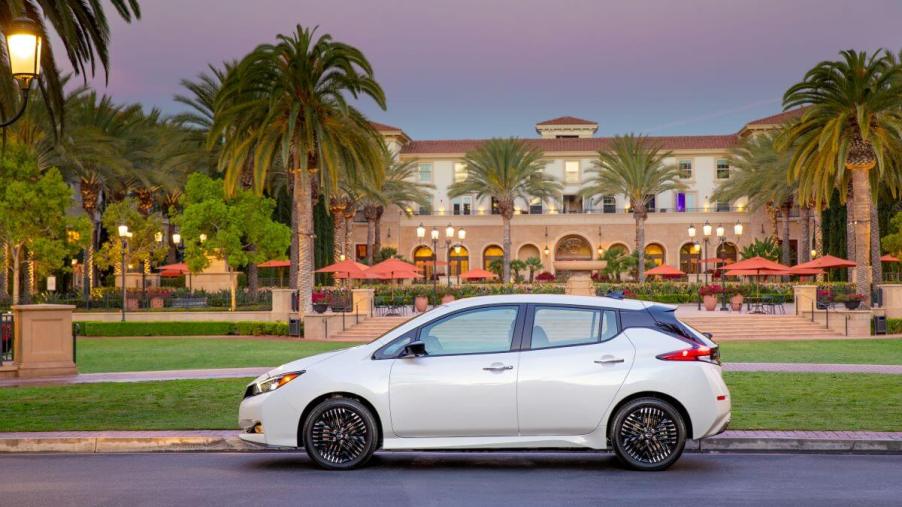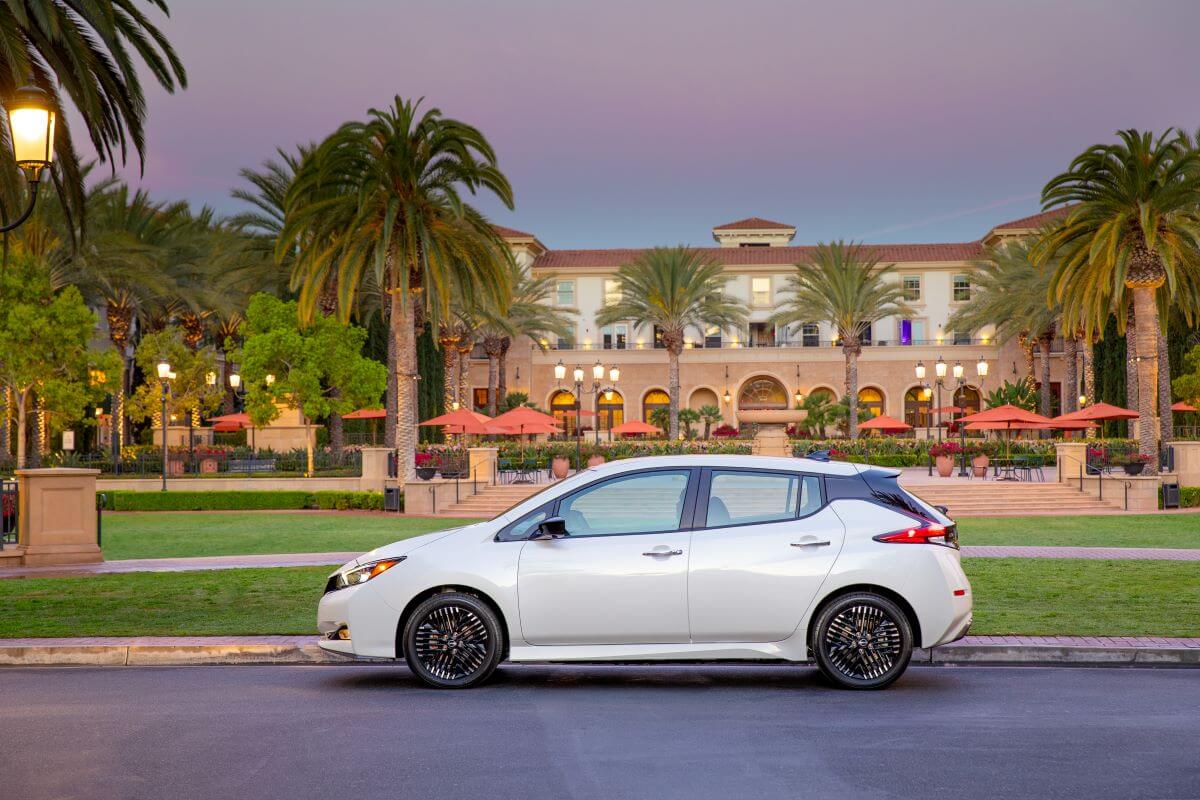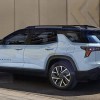
1 Brilliantly Simple Way the 2023 Nissan Leaf Outshines Other EVs
Since debuting in 2010, the Nissan Leaf has become one of the world’s most popular EVs. This all-electric compact car is known for its practicality and affordability, making it accessible for consumers wanting to wade into EV waters. In addition, the Leaf has undergone performance updates and improvements over the years. Nissan extended the car’s driving range and increased the battery capacity. Although it isn’t sleek or luxurious like a Tesla EV, the 2023 Nissan Leaf has one simple advantage.
The 2023 Nissan Leaf has easy-to-use controls

Controls are important features in any vehicle. Overly complicated controls can cause driver distraction, increasing the risk of accidents.
Tesla EVs are state-of-the-art but rely on a large touchscreen for nearly all functions. The Leaf’s dashboard controls aren’t lavish, but they’re easy to see, reach, and use.
Its touchscreen is a modest 8.0 inches, so it isn’t overwhelmingly large and distracting. In addition, the full-color screen is clear and easy to read. It incorporates two physical knobs for volume and tuning/scrolling, along with several settings buttons with easy-to-read labels.
One particularly helpful button is day/night mode, allowing the driver to adjust the screen’s brightness with one touch if the auto setting isn’t to their liking. And initializing Apple CarPlay and Android Auto is simple — the system detects when a smartphone is paired and defaults to that audio mode without manual input. Another simple but helpful control is the camera button, allowing the user to view the outside of the car from various camera angles. The infotainment system also provides customizable widgets for frequently used apps.
To the left of the infotainment screen, the digital gauge cluster is easy to control through steering-wheel buttons. The display’s menu has a few layers of settings, but they’re intuitive, and the buttons are responsive.
Overall, simple tactile controls like knobs and buttons help keep the driver’s eyes on the road instead of on screens. That makes driving safer.
More about the 2023 Nissan Leaf, including pricing and notable features
Nissan starts the 2023 Leaf at $28,040. There are two trims available. The SV Plus has a larger 60-kWh battery and an EPA-estimated range of 212 miles. That’s a big difference compared with the S base trim’s 40-kWh battery and 149-mile range.
Using a standard 120-volt outlet takes around 30 hours to recharge the Leaf fully. However, the supplied home charging kit has a plug that can convert to a 240-volt heavy-duty plug, such as those used with a clothes dryer, allowing owners to skip installing a dedicated charger. When we tested the 2023 Nissan Leaf SV Plus, it took only an hour to charge from 24% battery life, with 60 miles of range left, to 95%.
In addition, the NissanConnect app allows users to warm or cool the interior before departure and allows drivers to lock and unlock the car or track its location remotely.
Advanced driver-assistance systems include forward collision warning, automatic emergency braking with pedestrian detection, blind-spot warning, and rear cross-traffic alert. The optional ProPilot Assist helps keep the EV in its lane and adjust its speed in traffic.
Other cars and SUVs with easy-to-use controls
Consumer Reports lists other cars and SUVs with easy-to-use controls. They include the 2023 Honda CR-V, Honda Accord, Audi A3, and Chevy Traverse.
The Honda CR-V is an all-around winner for its 2023 redesign, spacious cargo hold, comfort, and easy-to-use controls. But it can’t beat the Leaf in fuel economy and compact size, ideal for city driving.
And though the Nissan Leaf isn’t the most exciting car, its functionality earned it a seat among pricier models. So if you’re in the market for a practical EV without all the fancy gadgets and a hefty price tag, the Leaf is worth more than a passing glance.


